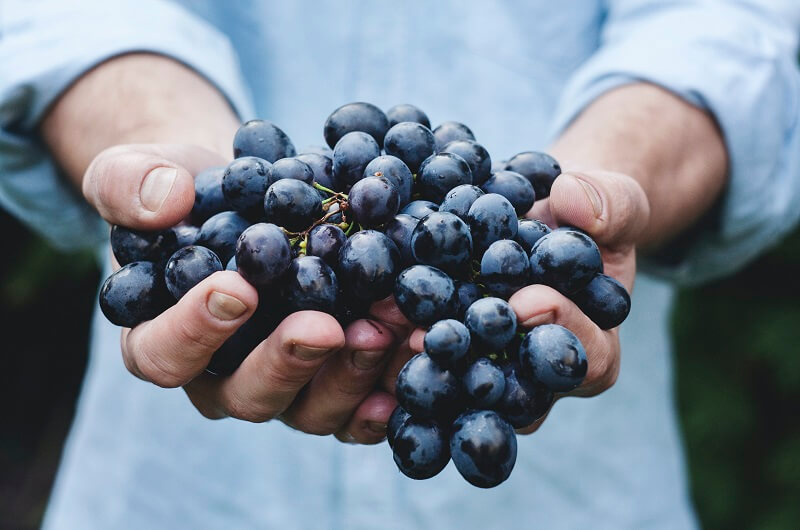Ah, the world of wine. It’s vast, sophisticated, and full of hidden gems waiting to be discovered. But let’s address one of the questions that often pops up when we think about the very foundation of our favorite drink – the grapes. Specifically, are wine grapes edible? Let’s dive in, shall we?
What are Wine Grapes?
Wine grapes, as you might have guessed, are the types of grapes specifically cultivated for making wine. Now, not all grapes are made equal. The ones you munch on during your summer picnic differ from the ones used to produce that bottle of Cabernet Sauvignon you enjoy.
Varieties of Wine Grapes
There are numerous varieties of wine grapes, each bringing its unique taste, texture, and aroma to the table. Some popular wine grape varieties include:
- Cabernet Sauvignon: One of the most recognized wine grape varieties in the world.
- Merlot: Known for its soft, ripe, elegant and quite luscious taste.
- Chardonnay: A versatile grape variety used in everything from sparkling wines to the rich and concentrated white wines of Burgundy.
Edibility of Wine Grapes
Yes, wine grapes are edible. But, they’re quite different from table grapes – the ones we commonly snack on. Let’s see what sets them apart.
Taste and Texture
Wine grapes are generally sweeter than table grapes. They pack in more sugar, which is essential for fermentation. However, this doesn’t necessarily mean they taste better when eaten raw. The skin of wine grapes is usually thicker, and they have larger seeds, which can be a turn-off for some.
Size
Wine grapes are generally smaller than table grapes. Their compact size means more skin and less flesh. This skin-to-flesh ratio is crucial in winemaking, as the skin imparts color and tannins to the wine.
Seed Content
As mentioned, wine grapes tend to have larger seeds. While seeds can be quite bitter and not the most pleasant to bite into, they play a vital role in winemaking. They contribute tannins which add complexity and longevity to wines.
So, Should You Eat Them?
Well, there’s no harm in trying! Some people love the taste of wine grapes, enjoying their sweetness and distinct flavor profiles. Others, not so much. It boils down to personal preference. If you ever get the chance to visit a vineyard, don’t hesitate to ask if you can taste a grape or two – it’s a fun experience to taste the raw ingredient of your favorite wines.
The Nutritional Side of Wine Grapes
Now that we’ve tackled the taste and texture, let’s dive into the nutritional aspects of wine grapes. After all, many of us are curious about the health benefits (or lack thereof) of what we consume.
Vitamins and Minerals
Wine grapes, like their table grape cousins, are a good source of several vitamins and minerals:
- Vitamin C: An antioxidant that helps with the absorption of iron and promotes healthy skin.
- Vitamin K: Essential for blood clotting and bone health.
- Potassium: Helps regulate blood pressure and fluid balance.
Antioxidants
Wine grapes are also rich in antioxidants, particularly:
- Resveratrol: Found predominantly in the skins of red grapes, it’s believed to have heart health benefits and is often cited when discussing the health advantages of drinking red wine.
- Flavonoids: They help in protecting your cells and can play a role in heart health.
- Tannins: While often discussed in the context of wine’s taste and aging potential, tannins also have antioxidant properties.
Calories and Sugar
Though wine grapes are sweet and packed with sugar (which is vital for fermentation), they are relatively low in calories. However, as with anything, moderation is key, especially if you’re watching your sugar intake.
Potential Concerns
As delightful as it might be to munch on wine grapes, there are a few things you should keep in mind:
Pesticides
Like many crops, grapes can be treated with pesticides. If you’re sampling grapes straight from a vineyard, it’s good to ask about their pesticide practices or look for vineyards that follow organic farming methods.
Seeds
As we discussed, the seeds in wine grapes can be a bit bitter. While they’re not harmful, and some even argue they’re nutritious, they might not offer the most pleasant munching experience.
Final Thoughts
While wine grapes aren’t typically found in the fruit aisle of your grocery store, they offer a unique tasting experience that every wine lover (or curious eater) should try at least once. If you get the chance to tour a vineyard, seize the opportunity to taste the raw magic that eventually transforms into the enchanting drink we adore.
Remember, food (or in this case, fruit) experiences are subjective. What’s delightful to one person might not be to another. So, give wine grapes a try and form your own opinion. Cheers to curiosity and the world of flavors waiting to be explored!
